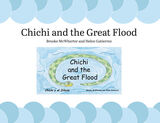

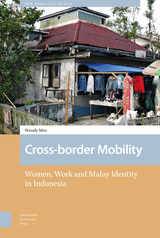
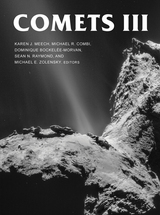
With the contributions of more than eighty authors spanning twenty-five chapters, Comets III investigates the early solar system origins of comets and the clues provided by the composition and distribution of their present population for their long-term dynamical evolution and interrelations with other members of the solar system. Organized thematically, each section is designed to enable connections across disciplinary boundaries in both planetary science and planetary formation astrophysics.
This comprehensive volume explores recent advancements in space missions, telescopic observations, and robotic surveys, providing new understandings of the origins and dynamics of comets. Intended for both researchers and students, Comets III offers insights into unresolved questions and sets the stage for future advancements.

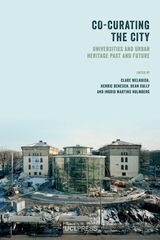
Co-Curating the City explores the role of universities in the construction and mobilization of heritage discourses in urban development and regeneration processes, with a focus on six case study sites ranging from Sweden to Brazil. The book expands the field of critical heritage studies in the urban domain, arguing that universities should position themselves as significant institutions in the development of urban heritage narratives and heavily influence urban development. The case studies investigate how universities, as mixed communities of interest dispersed across buildings and urban sites, utilize strategies of engagement with local people and neighborhoods and ask how this could contribute to a reshaping of ideas, narratives, and lived experience of urban heritage in which universities have a distinctive agency.

Mendoza and Clavell's treatment of this topic renders an important philosophical conversation about digital realities and how they can actually make human life more human. This book provides a framework for using human attraction to information and communication tech for human benefit. It can be done! The authors apply the work of old and new masters to help open the new horizons of communication technology wherein human beings can flourish.

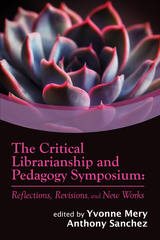
The Critical Librarianship and Pedagogy Symposium: Reflections, Revisions, and New Works collects expanded and updated presentations given at the Critical Librarianship and Pedagogy Symposium (CLAPS) held biennially at the University of Arizona Libraries. This anthology provides a toolkit for critical library pedagogy that recognizes how knowledge is created within historical and deeply politicized contexts. Authors working in library or disciplinary teaching fields explore intersections between information literacy and critical pedagogy and provide current thinking, assessment, and reflection on their practices of teaching students how to recognize and critique the oppressive power structures inherent in educational systems. The work done by librarians is analyzed to reveal the socioeconomic frameworks that drive the costs of our labor.
Divided into five parts—Critical Pedagogies in the Classroom, Feminist Library Practices, The Labor of Librarianship, Practices of Care, and Community Archives—chapters include explorations of the advent of neoliberalism in higher education, social justice, white fragility, supporting neurodivergence in education, and disability-rights activism. They use lenses such as queer, intersectional, feminist, and critical race theory to examine subjects, and include practices for sustainable teaching, facilitating dialogue in the classroom, and using tools such as user experience or empathic design. The Critical Librarianship and Pedagogy Symposium offers ways to incorporate critical pedagogy theory into your own practices as educators, both within the library and in higher education in general.


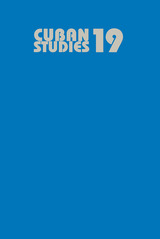


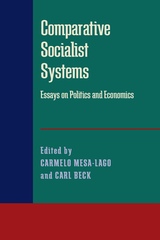


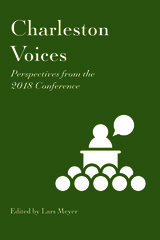
TESTIMONIALS
“The best library gathering around. I look forward to it.”
“The Charleston Conference is an incredibly stimulating venue. I am tired afterwards, but get so many great ideas, network with my colleagues, and learn what is going on. I recommend it highly.”
“Charleston is the only conference that is worth attending.”
https://www.charlestonlibraryconference.com/about/
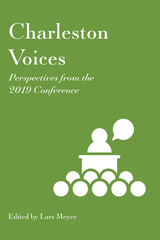
TESTIMONIALS
“The best library gathering around. I look forward to it.”
“The Charleston Conference is an incredibly stimulating venue. I am tired afterwards, but get so many great ideas, network with my colleagues, and learn what is going on. I recommend it highly.”
“Charleston is the only conference that is worth attending.”
https://www.charlestonlibraryconference.com/about/
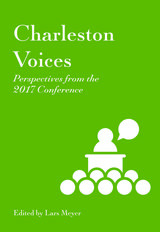
TESTIMONIALS
“The best library gathering around. I look forward to it.”
“The Charleston Conference is an incredibly stimulating venue. I am tired afterwards, but get so many great ideas, network with my colleagues, and learn what is going on. I recommend it highly.”
“Charleston is the only conference that is worth attending.”
https://www.charlestonlibraryconference.com/about/
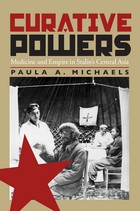
Finalist, PEN Center USA Literary Awards, Research Nonfiction
Rich in oil and strategically located between Russia and China, Kazakhstan is one of the most economically and geopolitically important of the so-called Newly Independent States that emerged after the USSR's collapse. Yet little is known in the West about the region's turbulent history under Soviet rule, particularly how the regime asserted colonial dominion over the Kazakhs and other ethnic minorities.
Grappling directly with the issue of Soviet colonialism, Curative Powers offers an in-depth exploration of this dramatic, bloody, and transformative era in Kazakhstan's history. Paula Michaels reconstructs the Soviet government's use of medical and public health policies to change the society, politics, and culture of its outlying regions. At first glance the Soviets' drive to modernize medicine in Kazakhstan seems an altruistic effort to improve quality of life. Yet, as Michaels reveals, beneath the surface lies a story of power, legitimacy, and control. The Communist regime used biomedicine to reshape the function, self-perception, and practices of both doctors and patients, just as it did through education, the arts, the military, the family, and other institutions.
Paying particular attention to the Kazakhs' ethnomedical customs, Soviet authorities designed public health initiatives to teach the local populace that their traditional medical practices were backward, even dangerous, and that they themselves were dirty and diseased. Through poster art, newsreels, public speeches, and other forms of propaganda, Communist authorities used the power of language to demonstrate Soviet might and undermine the power of local ethnomedical practitioners, while moving the region toward what the Soviet state defined as civilization and political enlightenment.
As Michaels demonstrates, Kazakhs responded in unexpected ways to the institutionalization of this new pan-Soviet culture. Ethnomedical customs surreptitiously lived on, despite direct, sometimes violent, attacks by state authorities. While Communist officials hoped to exterminate all remnants of traditional healing practices, Michaels points to evidence that suggests the Kazakhs continued to rely on ethnomedicine even as they were utilizing the services of biomedical doctors, nurses, and midwives. The picture that ultimately emerges is much different from what the Soviets must have imagined. The disparate medical systems were not in open conflict, but instead both indigenous and alien practices worked side by side, becoming integrated into daily life.
Combining colonial and postcolonial theory with intensive archival and ethnographic research, Curative Powers offers a detailed view of Soviet medical initiatives and their underlying political and social implications and impact on Kazakh society. Michaels also endeavors to link biomedical policies and practices to broader questions of pan-Soviet identity formation and colonial control in the non-Russian periphery.
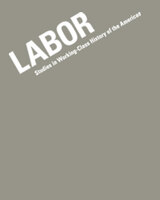
Assembling essays written by three generations of labor historians, each with markedly different approaches to the labor histories of early America and the Atlantic world, this issue offers unique insights into the evolution of class analysis and its shifting place in the field of labor history. In one essay, a renowned member of the first generation of “new social historians” reflects on his work, considering the past and future of class analysis while highlighting some of his current views about class in early America. In other essays, a new generation of scholars enriches scholarship on early America and the Atlantic by incorporating complex and nuanced discussions of race and gender into traditional class analyses. Perhaps signaling the future of the field, another essay discusses the theoretical foundations and implications of a globalized mode of historical class analysis, examining the complicated connections among peoples in Europe, Africa, and North America during the seventeenth and eighteenth centuries and the impact these connections had in shaping early America and the Atlantic world.
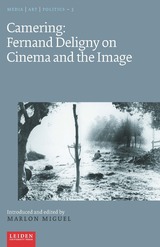
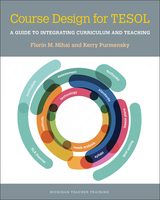
Part I explores the basic language acquisition theories and their influences on current teaching practices in the field. Part II then moves on to the core elements of designing a curriculum or course: conducting the needs analysis, setting of course goals/objectives, designing the syllabus, and writing lesson plans.
Part III: Instructional Activities and Assessment Techniques features chapters on the teaching of listening, speaking, reading, writing, grammar, and culture. Within each of these chapters, the authors address the fundamental issues related to the teaching of each skill and then discuss the components of a good activity for that skill (and how to design one), and then offer four sample activities (one for each type of syllabus) and guidance on assessing that skill. The activities can be adapted for use in a variety of classrooms and settings.
Part IV addresses contemporary trends—curriculum issues in North America and Europe (standards and educational policy), practices in teaching in Asia (particularly China and Korea), and technology-enhanced learning.
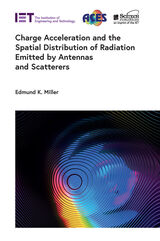

In the present proliferation of blocs, alliances and pacts, the Commonwealth remains unique. Britain’s old Colonial Empire has grown into a free, loose grouping of equal sovereign states, each respecting to the full of the others’ independence. J. D. B. Miller examines the political structure of the Commonwealth and the international status of its members, and forecasts the circumstances in which it can me expected to endure.
He contends that the commonwealth is “a concert of convenience” to which each member belongs for reasons of interest rather than of sentiment. The countries of the Commonwealth find profit in the means of consultation and economic cooperation which it offers, and in the political field confine their discussions to the larger issues on which there is a measure of common interest.
The Commonwealth in the World is one of the few works which deals conveniently with these matters in a single volume. As an Australian, Miller views his subject with the necessary detachment; and his writing is as spirited as his judgments are sound.

George Orwell once said of Dickens’ work: “It is not so much a series of books, it is more like a world.” In this book, J. Hillis Miller attempts to identify this “world,” to show how a single view of life pervades every novel that Dickens wrote, and to trace the development of this view throughout the chronological span of Dickens’ career. There are full critical analyses of six of the novels—Pickwick Papers, Oliver Twist, Martin Chuzzlewit, Bleak House, Great Expectations, and Our Mutual Friend—and shorter discussions of many of the others. Each novel has been viewed as the transformation of the real world of Dickens’ experience into an imaginary world with certain special qualities of its own.
Certain elements persist through all the novels, the most important of which are the general situation of the hero at the beginning of the story and the general nature of the world in which he lives. Each of Dickens’ heroes begins his life cut off from other people, in a world which seems menacing and unfriendly and, on the social side, composed of inexplicable rituals and mysterious conventions; each lives, like Paul Dombey, “with an aching void in his young heart, and all outside so cold, and bare, and strange.” The heroes then move through successive adventures in an attempt to understand the world, to integrate themselves into it, and thus to find their true identity. Initially creatures of poverty and indigence, those characters reach out for something which transcends the material world and the self, something other than human, which will support and maintain the self without engulfing it. Within the totality of Dickens' novels this problem—the search for selfhood—is stated and restated, until, in the later novels, the answer is found to line in a rejections of the past, the given, and the exterior, and a reorientation toward the future and the free human spirit itself as the only true sources of value.
With a real understating and sympathy for his subject, Miller manages to transport us into the midst of Dickens’ “world” and to bring alive for us the whole strange and wonderful tribe that people his novels. This is an enlightening, well-written, enjoyable book for anyone who has ever had an interest in Dickens and his work.

This volume brings together the findings from a five-year research project that seeks to reimagine the relationship between conservation knowledge and the humanistic study of the material world. The project, “Cultures of Conservation,” was supported by the Andrew W. Mellon Foundation and included events, seminars, and an artist-in-residence.
The effort to conserve things amid change is part of the human struggle with the nature of matter. For as long as people have made things and kept things, they have also cared for and repaired them. Today, conservators use a variety of tools and categories developed over the last one hundred and fifty years to do this work, but in the coming decades, new kinds of materials and a new scale of change will pose unprecedented challenges. Looking ahead to this moment from the perspectives of history, philosophy, materials science, and anthropology, this volume explores new possibilities for both conservation and the humanities in the rethinking of active matter.
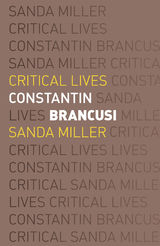
Acknowledged as one of the major sculptors and avant-garde artists of the twentieth century, Constantin Brancusi (1876–1957) was also one of the most elusive, despite his fame. His mysterious nature was not only due to his upbringing in Romania—which, at the time, was still regarded by much of Europe as a backward country haunted by vampires and werewolves—but also because Brancusi was aware that myth and an aura of otherness appealed to the public. His self-mythology remained intact until the publication of Brancusi in 1986 by Romanian artists Alexandre Istrati and Natalia Dumitresco, who made available a small selection of the archive of Brancusi’s correspondence. And in 2003, a comprehensive catalogue, which made the bulk of Brancusi’s private correspondence public for the first time, was published by the Centre Pompidou to accompany a retrospective on Brancusi’s work.
In Constantin Brancusi, Sanda Miller employs these extensive new resources to better assess Brancusi’s life and work in relationship to each other, providing valuable and innovative insights into his relationships with friends, collectors, dealers and lovers. Miller’s perceptive book allows Brancusi to finally take his rightful place among the most important of the intellectual personalities who shaped twentieth-century modernism.

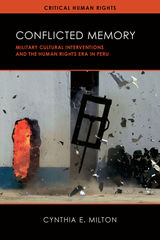
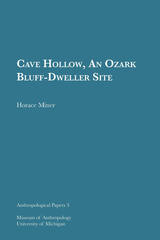
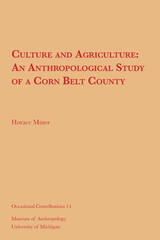
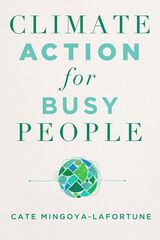
Climate Action for Busy People is a hopeful and realistic roadmap for individuals and groups who want to boost climate preparedness and move the needle towards environmental justice. Drawing from her professional and personal success in climate adaptation and community organizing, Cate Mingoya-LaFortune begins with a brief history of why our communities look the way they do (spoiler, it’s not an accident!) and how that affects how vulnerable we are to climate risks. Each chapter will help readers scale up their actions, from identifying climate solutions that an individual or small group can pull off in a handful of weekends, like tree plantings or depaving parties, to advocating for change at the municipal level through coalition-building and data collection. It’s not too late for people of all ages and skill levels to create climate safe neighborhoods.
Climate Action for Busy People is an invaluable guide for anyone who wants to make lasting and equitable improvements that will make their communities climate resilient.

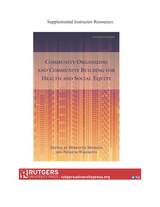


When the first Disneyland opened its doors in 1955, it reinvented the American amusement park and transformed the travel, tourism, and entertainment industries forever. Now a global vacation empire, the original park in Anaheim, California, has been joined by massive complexes in Florida, Tokyo, Paris, Hong Kong, and Shanghai.
Spanning six decades, three continents, and five distinct cultures, Sabrina Mittermeier presents an interdisciplinary examination of the parks, situating them in their proper historical context and exploring the distinct cultural, social, and economic landscapes that defined each one at the time of its construction. Mittermeier then spotlights the central role of class in the subsequent success or failure of each venture. The first comparative study of the Disney theme parks, the book closes a significant gap in existing research and is an important new contribution to the field.
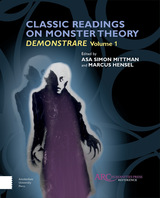
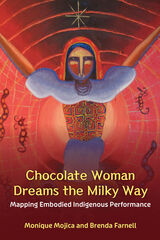
Co-authored with anthropologist Brenda Farnell, the book challenges the divide between artist and scholar, and addresses the many levels of cultural, disciplinary, and linguistic translations required to achieve this. Placing the complex intellect inherent to Indigenous Knowledges at its center, the book engages Indigenous performance theory, and concepts that link body, land, and story, such as terra nullius/corpus nullius, mapping, pattern literacy, land literacy, and movement literacy. Enhanced by contributions from other artists and scholars, the book challenges Eurocentric ideologies about what counts as “performance” and what is required from an “audience,” as well as long-standing body-mind dualisms.

The idea that character education should be an important element in the curriculum of public schools is controversial. Critics reject the idea that schools should be involved in teaching values. Proponents often disagree among themselves—some detailing the proper values students should be taught, others arguing that character development must be part of a larger process of constructing an ethical community in the schools. The contributors to this volume bring a breadth of perspectives, experience, and approaches to the problem of assessing contemporary character education.
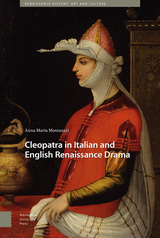
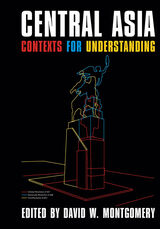
Honorable Mention, 2023 CESS Outreach Award
Central Asia is a diverse and complex region of the world often characterized in the West as being difficult to access. Central Asia: Contexts for Understanding offers the most comprehensive introduction to the region available. Combining thematic chapters with case studies, readers will learn to appreciate the interconnected aspects of life in Central Asia. These wide-ranging, easy-to-understand contributions from some of the leading scholars in the field provide the context needed to understand Central Asia and presents a launching-off point for further research.
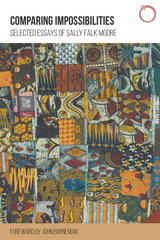
The essays range from studies of myths of incest and sexuality to those of economic development projects, from South America to Africa. The result is an astonishing assortment of works from one of the most respected legal anthropologists in the field, one who brought together disparate places and ideas in enriching comparisons that showcase the possibilities—and impossibilities—of anthropology.
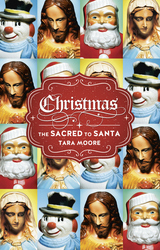
Delving into the long story of this unifying but also divisive holiday, Tara Moore describes the evolution of Christmas and the deep traditions that bind a culture to its version of it. She probes the debates that have long accompanied the season—from questions of the actual date of Christ’s birth to frictions between the sacred and the secular—and discusses the characters associated with the holiday’s celebration, including Saint Nicholas, the Magi, Scrooge, and Krampus. She also explores how customs such as Christmas trees, feasting, and gift giving first emerged and became central facets of the holiday, while also examining how Christmas has been portrayed in culture—from the literary works of Charles Dickens to the yearly bout of holiday films, television specials, traditional carols, and modern tracks. Ultimately, Moore reveals, Christmas’s longevity has depended on its ability to evolve. Packed with illustrations, Christmas is a fascinating look at the holiday we only think we know.



Morganová explains the various forms of action art, from the “actions” and “happenings” of the 1960s; to the actions of land art that encompass stones, trees, water, or fire; to recent displays of body art; to the actions of the latest generation of artists, who are using the principles of action art in contemporary postconceptual and participative art. Along the way, she introduces the most prominent Czech artists of each specific niche, including Milan Knížák, Zorka Ságlová, Ivan Kafka, Petr Štembera, Karel Miler, Jirí Kovanda, and Katerina Šedá, and demonstrates not only the changes in the art forms themselves but also the shifting roles of artists and spectators after World War II.
With over one hundred illustrations, Czech Action Art introduces this heretofore overlooked but fascinating art form to a global readership.

Sifting through the grounds of coffee history, Morris discusses the diverse cast of caffeinated characters who drank coffee, why and where they did so, as well as how it was prepared and what it tasted like. He identifies the regions and ways in which coffee has been grown, who worked the farms and who owned them, and how the beans were processed, traded, and transported. Morris also explores the businesses behind coffee—the brokers, roasters, and machine manufacturers—and dissects the geopolitics linking producers to consumers. Written in a style as invigorating as that first cup of Java, and featuring fantastic recipes, images, stories, and surprising facts, Coffee will fascinate foodies, food historians, baristas, and the many people who regard this ancient brew as a staple of modern life.

This book also investigates the impact of managerialism, marketization, and globalization on university cultures, asking what critical cultural scholarship can do in such increasingly adversarial conditions. Experiments in Asian universities are emphasized as exemplary of what can or could be achieved in other contexts of globalized university policy.
Contributors. Tony Bennett, Stephen Ching-Kiu Chan, Kuan-Hsing Chen, Douglas Crimp, Dai Jinhua, John Nguyet Erni, Mette Hjort, Josephine Ho, Koichi Iwabuchi, Meaghan Morris, Tejaswini Niranjana, Wang Xiaoming, Audrey Yue
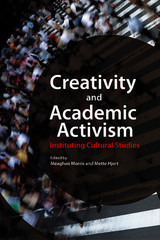
This book also investigates the impact of managerialism, marketization, and globalization on university cultures, asking what critical cultural scholarship can do in such increasingly adversarial conditions. Experiments in Asian universities are emphasized as exemplary of what can or could be achieved in other contexts of globalized university policy.
Contributors. Tony Bennett, Stephen Ching-Kiu Chan, Kuan-Hsing Chen, Douglas Crimp, Dai Jinhua, John Nguyet Erni, Mette Hjort, Josephine Ho, Koichi Iwabuchi, Meaghan Morris, Tejaswini Niranjana, Wang Xiaoming, Audrey Yue
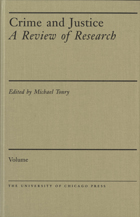
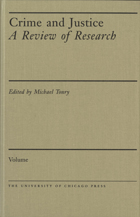
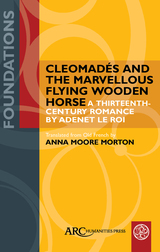
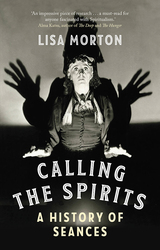
Calling the Spirits investigates the eerie history of our conversations with the dead, from necromancy in Homer’s Odyssey to the emergence of Spiritualism—when Victorians were entranced by mediums and the seance was born. Among our cast are the Fox sisters, teenagers surrounded by “spirit rappings”; Daniel Dunglas Home, the “greatest medium of all time”; Houdini and Sir Arthur Conan Doyle, whose unlikely friendship was forged, then riven, by the afterlife; and Helen Duncan, the medium whose trial in 1944 for witchcraft proved more popular to the public than news about the war. The book also considers Ouija boards, modern psychics, and paranormal investigations, and is illustrated with engravings, fine art (from beyond), and photographs. Hugely entertaining, it begs the question: is anybody there . . . ?

Chicago began as a trading post, which grew into a market for goods from the west, sprouting the still-largest rail hub in America. As people began to trade virtual representations of those goods—futures—the city became a hub of finance and law. And as academics studied the city’s growth and its economy, it became a hub of intellect, where the University of Chicago’s pioneering sociologists shaped how cities at home and abroad understood themselves. Looking inward, Moser explores how Chicago thinks of itself, too, tracing the development of and current changes in its neighborhoods. From Boystown to Chinatown, Edgewater to Englewood, the Ukrainian Village to Little Village, Chicago is famous for them—and infamous for the segregation between them.
With insight sure to enlighten both residents and anyone lucky enough to visit the City of Big Shoulders, Moser offers an informed local’s perspective on everything from Chicago’s enduring paradoxes to tips on its most interesting sights and best eats. An affectionate, beautifully illustrated urban portrait, his book takes us from the very beginnings of Chicago as an idea—a vision in the minds of the region’s first explorers—to the global city it has become.

Long-acting and reversible contraceptives, such as Norplant and Depo-Provera, have been praised as highly effective, moderately priced, and generally safe. Yet, as this book argues, the very qualities that make these contraceptives an important alternative for individual choice in family planning also make them a potential tool of coercive social policy. For example, policymakers have linked their use to welfare benefits, and judges, to probation agreements. In this book, authors from the fields of medicine, ethics, law, and the social sciences probe the unique and vexing ethical and policy issues raised by long-acting contraception.
The book offers comprehensive ethical guidelines for health care professionals and policymakers, as well as an ethical framework for analyzing policies and practices concerning long?acting contraceptives. The authors consider cultural, social, and ethical issues pertaining to contraception, and they provide historical and scientific background on today's controversies. They explore alternative conceptual and theoretical frameworks, including analyses of autonomy, coercion, and responsibility in reproductive decisions. This volume also notes the special concerns that arise when policies promoting long?term birth control target low-income women and women of color, and when these contraceptives are used in developing countries.

Chocolate layer cake. Fudge brownies. Chocolate chip cookies. Boxes of chocolate truffles. Cups of cocoa. Hot fudge sundaes. Chocolate is synonymous with our cultural sweet tooth, our restaurant dessert menus, and our idea of indulgence. Chocolate is adored around the world and has been since the Spanish first encountered cocoa beans in South America in the sixteenth century. It is seen as magical, addictive, and powerful beyond anything that can be explained by its ingredients, and in Chocolate Sarah Moss and Alec Badenoch explore the origins and growth of this almost universal obsession.
Moss and Badenoch recount the history of chocolate, which from ancient times has been associated with sexuality, sin, blood, and sacrifice. The first Spanish accounts claim that the Aztecs and Mayans used chocolate as a substitute for blood in sacrificial rituals and as a currency to replace gold. In the eighteenth century chocolate became regarded as an aphrodisiac—the first step on the road to today’s boxes of Valentine delights. Chocolate also looks at today’s mass-production of chocolate, with brands such as Hershey’s, Lindt, and Cadbury dominating our supermarket shelves.
Packed with tempting images and decadent descriptions of chocolate throughout
the ages, Chocolate will be as irresistible as the tasty treats it describes.
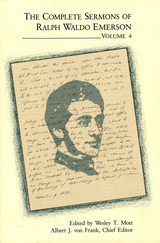
The final volume in the series focuses on a crossroads in Emerson's life, the year 1832, when he resigned from his ministry at the Second Church of Boston. It includes a new and more accurate text of the single most important of Emerson's sermons, "The Lord's Supper Sermon." For the first time, this sermon has been transcribed from the manuscript Emerson actualy read from on the occasion of its only delivery. The sermon was not only pivotal in Emerson's career, it was historically important because of the controversy that ensued over formalism in religion.
Volume 4 presents annotated texts of eight occasional sermons in addition to twenty-seven regular sermons, and an annotated text of relevant portions of the official records of the Second Church of Boston during Emerson's ministry. The sermons-most appearing in print for the first time-provide a thorough understanding of the evolution of Emerson's thought in the years immediately preceding the 1836 publication of Nature, a treatise of central importance to nineteenth-century American literature.
Transcribed and edited from manuscripts in Harvard's University's Houghton Library, the sermons are presented in a clear text approximating as nearly as possible the original version delivered to Emerson's congregation. As well as the detailed chronology, explanatory footnotes, and textual endnotes found in previous volumes, this one contains a comprehensive index to the entire four-volume collection. Such outstanding textual scholarship makes this edition a unique entrance into the spiritual life of a man who so profoundly influenced American thought.

In this vigorous and well-documented "current view" of competition in the mid-western coal industry, Reed Moyer has set himself two tasks: to bring up to date existing economic analyses and to correct a "distortion which arises from generalizing about an industry composed of several diverse parts."
Most previous economic analyses have become obsolete, partly because of the shifting picture within the industry. Moyer’s detailed study of the economic behavior of the midwestern coal industry focuses on the transformation in the mining operation. Contrary to popular opinion, the bituminous coal industry in the Midwest is not "chronically depressed"; instead, it is successfully surmounting years of stagnation dating back to the 1920s, the effects of strikes, and the stiff competition offered coal by other fuels in the recent past. Concerned primarily with the coal producing regions of Illinois, Indiana, and western Kentucky, the author considers not only the economic factors touching the industry, but the geologic and geographic as well. In a framework of market structure, conduct, and performance Moyer analyzes in detail the "geographically isolated position of the midwestern coal industry," which "limits interdistrict competition."
Ample discussion is devoted to factors which influence the structural characteristics and the economic behavior of the industry: seller concentration, the importance of freight rates in determining delivery costs, price competition, entry barriers, and the effect of mining techniques on resource conservation, to name a few. The book includes an extensive treatment of the mining methods, strip and underground, common to the region, and their influence on its economic picture. This crisply written technical study searches thoroughly into the many facets of a leading component of a still lively major industry. The author has drawn on a supply of unpublished material as well as on information from confidential sources.
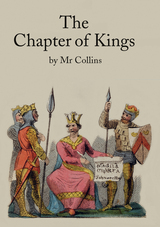
Poor Edward the Fifth was young killed in his bed
By his uncle, Richard, who was knocked on the head
By Henry the Seventh, who in fame grew big
And Henry the Eighth, who was fat as a pig!
By the time "Mr. Collins" had written this verse, George III, the King of England, had been noticeably missing for seven years—having spent much of the time in his final period of illness at Windsor Castle—and the country had forever lost its American colonies. For many English citizens this dismal period was considered to be the beginning of the end for the British monarchy. The Chapter of Kings, offered here in a facsimile edition, provides a good deal of illustration to that effect.
For the first time since 1818, these charming verses, which were written for children but remain a biting satire ofthe British monarchy, are available for our edification and amusement, each accompanied by hand-drawn "portraits" of England's kings, from Caesar through George, the prince and future king.
Written and illustrated with a keen sense of irony, The Chapter of Kings is a fascinating peek, both for children and parents, into nineteenth-century attitudes toward the royals.

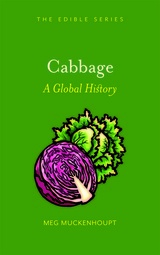
We can’t live without cabbage, but we don’t want to stand downwind of it, and in this lively book, Meg Muckenhoupt traces this culinary paradox. From senators’ speeches in ancient Rome to South Korean astronauts’ luggage, she explores the cultural and chemical basis for cabbage’s smelly reputation and enduring popularity. Filled with fascinating facts and recipes for everything from French cabbage soup to sauerkraut chocolate cake, Cabbage is essential reading for both food lovers and historians around the globe—and anyone craving their daily dose of leafy greens.

As they set off for Madagascar in 2003, photographer Max Pam and writer Stephen Muecke adopted as their guiding principle the idea of contingency—central to which is the conscious embrace of risk and chance. In doing so, they established a new aesthetic in which image and text are inextricably linked to the notion of possibility. This stunning collection of photos and essays is the result of their vision, collectively illustrating the beauty and wisdom on offer in one of the world’s poorest nations. A contribution to the wave of new ethnography exemplified by Michael Taussig and Kathleen Stewart, these encounters with events, images, and experimental writing dramatize thoughts and feelings in the ongoing construction of place.

Whether you are an alum, current student, “Michigan parent,” or simply an admirer of this unique institution, we invite you to relax and reinvigorate your mind, while transforming the variety of black and white images into a colorful keepsake.
This coloring book has been published by Michigan Publishing Services, part of the University of Michigan Library. We exist to help faculty members, staff, and students to effectively disseminate their research, record the history of the institution, and develop affordable resources for teaching and learning.


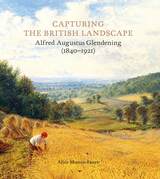
Though critics often reviewed Alfred Augustus Glendening’s exhibitions, very little has been written about the artist himself. Here, new and extensive research removes layers of mystery and misinformation about his life, family, and career, accurately placing him amid the British art world during much of the nineteenth and into the twentieth century. Glendening was a man from humble origins, working full-time as a railway clerk when he managed to make his London exhibition debut at the age of twenty—a feat that would have been almost impossible before the Victorian era ushered in new possibilities of social mobility. Although his paintings show a tranquil and unspoiled landscape, his environment was rapidly being transformed by social, scientific, and industrial developments, while advances in transport, photography, and other technical discoveries undoubtedly influenced him and his fellow painters.
Celebrating his uniquely Victorian story, the book places Glendening within his proper historical context. Running alongside the main text is a timeline outlining significant landmarks, from political and social events to artistic and technical innovations. Thoroughly researched, the narrative explores why and for whom he painted, his artistic training, and his various inspirations. The book uncovers new information about the Victorian art world and embraces such aspects as Royal Academy prejudices, the popularity of Glendening’s work at home and abroad, his use of photography, and the sourcing of his art materials.

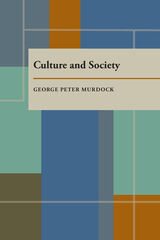
Twenty four essays cover a broad range of topics in cultural anthropology, and represent the best writings of George Peter Murdock and reveal his theoretical orientation and his many landmark contributions to the field.

Drawing on the study of thousands of specimens, Carex of Illinois and Surrounding States: The Oval Sedges is an invaluable resource for botanists, ecologists, environmental engineers, and professional and amateur environmentalists interested in a deeper understanding of these essential plants.
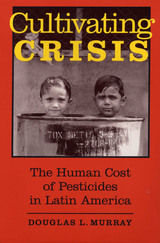
Since World War II, the Green Revolution has boosted agricultural production in Latin America and other parts of the Third World, with money, technical assistance, and other forms of aid from United States development agencies. But the Green Revolution came at a high price—massive pesticide dependence that has caused serious socioeconomic and public health problems and widespread environmental damage.
In this study, Douglas Murray draws on ten years of field research to tell the stories of international development strategies, pesticide problems, and agrarian change in Latin America. Interwoven with his considerations of economic and geopolitical dimensions are the human consequences for individual farmers and rural communities.
This highly interdisciplinary study, integrating the perspectives of sociology, ecology, economics, political science, and public health, adds an important voice to the debate on opportunities for and obstacles to more lasting and sustainable development in the Third World. It will be of interest to a wide audience in the social and environmental sciences.

Cranial and Postcranial Skeletal Remains from Easter Island was first published in 1968. Minnesota Archive Editions uses digital technology to make long-unavailable books once again accessible, and are published unaltered from the original University of Minnesota Press editions.
An archaeological expedition to Easter Island and the East Pacific was organized and financed by Thor Heyerdahl, the Norwegian anthropologist of Kon-Tiki fame, in 1955 -1956. Although Professor Murrill was not a member of the expedition, he was asked to study and analyze, from the standpoint of physical anthropology, the human skeletal material which was found by the expedition in excavations on Easter Island. Professor Murrill conducted a detailed examination of the remains, using such methods as metrical measurements, morphological observations, and analyses of blood group gene frequencies.
In this book he presents the factual data resulting from his study, much of it in the form of comprehensive tables, and his conclusions. The findings throw significant light on the question of where the prehistoric Easter Islanders came from. Contrary to theories favored by Mr. Heyerdahl and others that these people and their culture derived from prehistoric settlements on the west coast of South America, Professor Murrill concludes that the Easter Island people were Polynesian in origin and that they may have come from the Marquesas Islands. He finds it unlikely that a Negroid migration (possibly from Melanesia) antedated a Polynesian one to Easter Island and, on the basis of his evaluation of blood group systems, he suggests that the Polynesian and the American Indian types may be derived from the same gene pool in East Asia.
The book is illustrated with photographs, drawings, and maps, and there is a substantial bibliography.



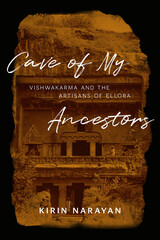
As a young girl in Bombay, Kirin Narayan was enthralled by her father’s stories about how their ancestors had made the ancient rock-cut cave temples at Ellora. Recalling those stories as an adult, she was inspired to learn more about the caves, especially the Buddhist worship hall known as the “Vishwakarma cave.” Immersing herself in family history, oral traditions, and works by archaeologists, art historians, scholars of Buddhism, Indologists, and Sanskritists, Narayan set out to answer the question of how this cave came to be venerated as the home of Vishwakarma, the god of making in Hindu and Buddhist traditions.
Cave of My Ancestors represents the perfect blend of Narayan’s skills as a researcher and writer. Her quest to trace her family’s stories took her to Ellora; through libraries, archives, and museums around the world; and across disciplinary borders. Equal parts scholarship, detective story, and memoir, Narayan’s book ably leads readers through centuries of history, offering a sensitive meditation on devotion, wonder, and all that connects us to place, family, the past, and the divine.
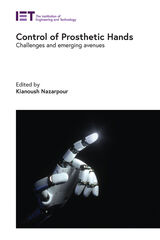

The Catalogue of Useful Plants of Colombia is the most comprehensive listing of the known useful plants found in Colombia. It was compiled by a team of Colombian and international botanists from the Royal Botanic Gardens, Kew, the Humboldt Institute, and other partner organizations. The catalog is accompanied by eleven chapters written by specialists covering a range of topics, from taxonomic, geographic, and conservation aspects to the plants’ uses in sustainable value chains and contributions to the bioeconomy. Specific topics such as medicinal, edible, and insecticide plants and their representation in the Amazon region are also covered. The catalog includes supplementary material that allows readers to explore open questions and opportunities, develop new ideas on the use of plants and their conservation, and foster social and environmental awareness.
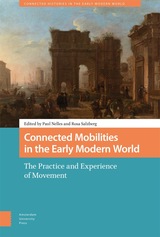
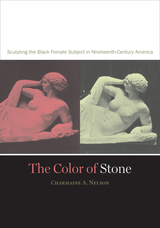
Nineteenth-century neoclassical sculpture was a highly politicized international movement. Based in Rome, many expatriate American sculptors created works that represented black female subjects in compelling and problematic ways. Rejecting pigment as dangerous and sensual, adherence to white marble abandoned the racialization of the black body by skin color.
In The Color of Stone, Charmaine A. Nelson brilliantly analyzes a key, but often neglected, aspect of neoclassical sculpture—color. Considering three major works—Hiram Powers’s Greek Slave, William Wetmore Story’s Cleopatra, and Edmonia Lewis’s Death of Cleopatra—she explores the intersection of race, sex, and class to reveal the meanings each work holds in terms of colonial histories of visual representation as well as issues of artistic production, identity, and subjectivity. She also juxtaposes these sculptures with other types of art to scrutinize prevalent racial discourses and to examine how the black female subject was made visible in high art.
By establishing the centrality of race within the discussion of neoclassical sculpture, Nelson provides a model for a black feminist art history that at once questions and destabilizes canonical texts.
Charmaine A. Nelson is assistant professor of art history at McGill University.
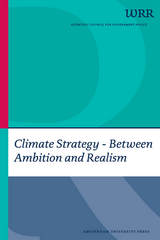
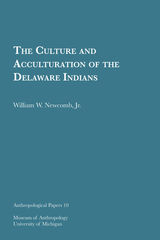
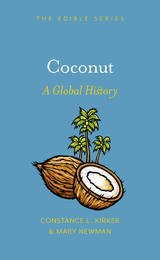
The flavor and image of the coconut are universally recognizable, conjuring up sweet, exotic pleasures. Called the “Swiss army knife” of the plant world, the versatile coconut can be an essential ingredient in savory curries, or a sacred element in Hindu rituals or Polynesian kava ceremonies. Coconut’s culinary credentials extend far beyond a sprinkling on a fabulous layer cake or cream pie to include products such as coconut vinegar, coconut sugar, coconut flour, and coconut oil. Complete with recipes, this book explores the global history of coconut from its ancient origins to its recent elevation to super-food status.
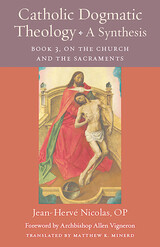

Children of the Albatross is divided into two sections: “The Sealed Room” focuses on the dancer Djuna and a set of characters, chiefly male, who surround her; “The Café” brings together a cast of characters already familiar to Nin’s readers, but it is their meeting place that is the focal point of the story.
As always, in Children of the Albatross, Nin’s writing is inseparable from her life. From Djuna’s story, told in “The Sealed Room” through hints and allusions, hazy in their details and chronology, the most important event to emerge is her father’s desertion (like Nin’s) when she was sixteen. By rejecting realistic writing for the experience and intuitions she drew from her diary, Nin was able to forge a novelistic style emphasizing free association, spontaneity, and improvisation, a technique that finds its parallel in the jazz music performed at the café where Nin’s characters meet.

The second novel in Anaïs Nin’s Cities of the Interior series, Children of the Albatross is divided into two sections: “The Sealed Room” focuses on the dancer Djuna and a set of characters, chiefly male, who surround her; “The Café” brings together a cast of characters already familiar to Nin’s readers, but it is their meeting place that is the focal point of the story.
As always, in Children of the Albatross, Nin’s writing is inseparable from her life. From Djuna’s story, told in “The Sealed Room” through hints and allusions, hazy in their details and chronology, the most important event to emerge is her father’s desertion (as Nin’s father did) when she was sixteen. By rejecting realistic writing for the experience and intuitions she drew from her diary, Nin was able to forge a novelistic style emphasizing free association, spontaneity, and improvisation, a technique that finds its parallel in the jazz music performed at the café where Nin’s characters meet.

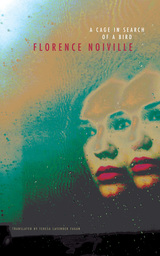
Laura Wilmote is a television journalist living in Paris. Her life couldn’t be better—a stimulating job, a loving boyfriend, interesting friends—until her phone rings in the middle of one night. It is C., an old school friend whom Laura recently helped find a job at the same television station: “My phone rang. I knew right away it was you.”
Thus begins the story of C.’s unrelenting, obsessive, incurable love/hatred of Laura. She is convinced that Laura shares her love, but cannot—or will not—admit it. C. begins to dress as Laura, to make her friends and family her own, and even succeeds in working alongside Laura on the unique program that is Laura’s signature achievement. The obsession escalates, yet is artfully hidden. It is Laura who is perceived as the aggressor at work, Laura who appears unwell, Laura who is losing it. Even Laura’s adoring boyfriend begins to question her. Laura seeks the counsel of a psychiatrist who diagnoses C. with De Clérambault syndrome—she is convinced that Laura is in love with her. And worse, the syndrome can only end in one of two ways: the death of the patient, or that of the object of the obsession.
A Cage in Search of a Bird is the gripping story of two women caught in the vise of a terrible delusion. Florence Noiville brilliantly narrates this story of obsession and one woman’s attempts to escape the irrational love of another—an inescapable, never-ending love, a love that can only end badly.

During the Progressive Era and New Deal, courts often invalidated generalized protective legislation, but frequently upheld measures that limited women's terms and conditions of labor. The book explores the reasoning in such cases that were decided between 1873 and 1937. By analyzing all reported opinion on the state and federal level, as well as materials from the women's movement and briefs filed in the U.S. Supreme Court, the study demonstrates that considerations of cases involving women's measures ultimately came to drive the development of doctrine.
The study combines historical institutionalism and feminism to address constitutional interpretation, showing that an analysis of conflict over the meaning of legal categories provides a deeper understanding of constitutional development. In doing so, it rejects purely political interpretations of the so-called Lochner era, in which the courts invalidated many legislative efforts to ameliorate the worst effects of capitalism. By addressing the dynamic interactions among interested laypersons, attorneys, and judges, it demonstrates that no individuals or institutions have complete control over the generation of constitutional meaning.
Julie Novkov is Assistant Professor of Political Science, University of Oregon
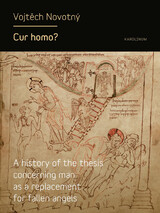
First introduced by St. Augustine and developed by other church fathers, the concept truly flourished in the twelfth century, when it was decided that man is an “original” being, created for its own sake, for whom God created the world. Vojtech Novotný goes on to trace the idea as it gradually faded over the centuries and, more recently, has been revived in the fields of modern philosophical thought.
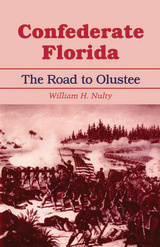
At the end of 1863 the Federal forces in the Department of the South were tied up in siege operations against Charleston and Savannah, operations that showed little progress or promise. The commander of the Department, Major General Quincy A. Gillmore, led an expedition into Florida to recruit blacks, cut off commissary supplies headed for other parts of the Confederacy, and disrupt the railroad system within Florida. Expedition forces landed at Jacksonville on February 7, 1864.


Charisma and Factionalism in the Nazi Party was first published in 1967. Minnesota Archive Editions uses digital technology to make long-unavailable books once again accessible, and are published unaltered from the original University of Minnesota Press editions.
Few aspects of the history of the German Nazi party have had as little scholarly attention as has the nature or pattern of the intraparty factionalism. References to conflicts within the party may be found in most accounts dealing with the Nazi movement, but this book presents the first systematic study of those conflicts and their significance to an understanding of Nazism.
Professor Nyomarkay bases his study on extensive research in which he had access to original source materials, including diaries and memoirs of party leaders and documents from Nazi trials and party archives. His study is concerned with the issues, attitudes, motivations, and actions of the various factions. His conclusions suggest new interpretations of such turning points in the history of Nazism as the Hanover and Bamberg conferences of 1925 and 1926, respectively, the Strasser crisis of 1930, and the stormtrooper purge of 1934.
The author examines the role of Hitler's charisma in the party and shows that this trait elevated Hitler above factional strife, making him the object rather than the subject of rivalries. The discussion of charisma points up the difference between the Nazi factionalism and that which has occurred in other totalitarian movements, such as communism, where authority rests on ideology rather than on charisma.
Through his study Professor Nyomarkay offers a new theory of the relationship between factional conflict and legitimacy of power, presenting a hypothesis of possible typologies of factional behavior based on the nature and degree of group cohesion.
The book is important for students of political science and history and particularly for those interested in totalitarian movements and comparative political parties.
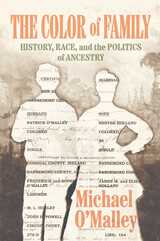
A zealous eugenicist, who regarded himself as white, ran Virginia’s Bureau of Vital Statistics in the first half of the twentieth century, misusing his position to reclassify people he suspected of hiding their “true” race. But in addition to being blinded by his prejudices, he and his predecessors were operating more by instinct than by science. Their whole dubious enterprise was subject not just to changing concepts of race but outright error, propagated across generations.
This is how Michael O’Malley, a descendant of a Philadelphia Irish-American family, came to have “colored” ancestors in Virginia. In The Color of Family, O’Malley teases out the various changes made to citizens’ names and relationships over the years, and how they affected families as they navigated what it meant to be “white,” “colored,” “mixed race,” and more. In the process, he delves into the interplay of genealogy and history, exploring how the documents that establish identity came about, and how private companies like Ancestry.com increasingly supplant state and federal authorities—and not for the better.
Combining the personal history of O’Malley’s own family with the broader history of racial classification, The Color of Family is an accessible and lively look at the ever-shifting and often poisoned racial dynamics of the United States.

The contributors feature reports on innovative projects implemented in schools across the United States. Goals of these projects include accommodating different styles of learning among students, encouraging greater participation in educational activities by parents from minority or economically disadvantaged backgrounds, and increasing cooperation among teachers, administrators, parents, students, and community members.
The introduction presents an overview of the guiding principles, technical measures, and political concerns critical to the success of educational reform movements and individual chapters include assessments of the impact specific reforms are having on the quality of education, evaluations of their sustainability, and discussions of relevant theory, recent research, and current practices and policies.

Another Confederate cavalry raid impends. You hear the snort of an impatient horse, the leathery squeaking of saddles, the low-voiced commands of officers, the muffled cluck of guns cocked in preparation—then the sudden rush of motion, the din of another attack.
This classic story seeks to illuminate a little-known theater of the Civil War—the cavalry battles of the Trans-Mississippi West, a region that included Missouri, Arkansas, Texas, the Indian Territory, and part of Louisiana. Stephen B. Oates traces the successes and defeats of the cavalry; its brief reinvigoration under John S. "Rip" Ford, who fought and won the last battle of the war at Palmetto Ranch; and finally, the disintegration of this once-proud fighting force.

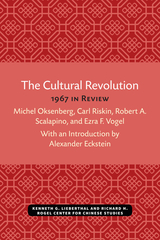
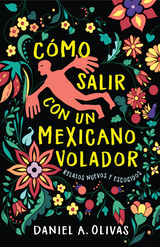
La colección se compone de los relatos favoritos de Daniel A. Olivas, previamente publicados, junto con dos nuevos relatos, uno distópico y otro mítico, que desafían la retórica y las políticas anti-inmigración de la administración Trump. Los lectores se encontrarán con un mundo lleno tanto de lo mágico como de lo cotidiano: un hombre con doce dedos que se encuentra a sí mismo en una cita mística con una mujer; Dios, que se aparece en forma de gallina raquítica; una mujer que lucha con valentía contra su maltratador; y dioses aztecas en busca de relevancia tras la conquista española—solo por nombrar algunos de los singulares personajes que pueblan estas páginas. El libro reúne algunos de los cuentos más extraños e inolvidables de Olivas, permitiendo a los lectores experimentar su muy distintiva, y muy Chicana, ficción.
READERS
Browse our collection.
PUBLISHERS
See BiblioVault's publisher services.
STUDENT SERVICES
Files for college accessibility offices.
UChicago Accessibility Resources
home | accessibility | search | about | contact us
BiblioVault ® 2001 - 2024
The University of Chicago Press









